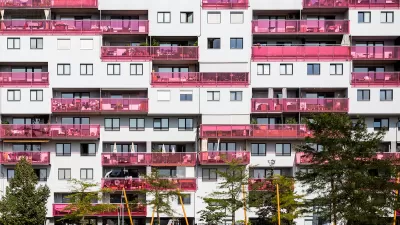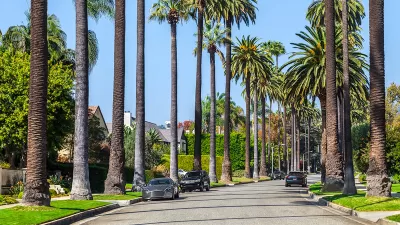The tax on property sales above $5 million has brought in less revenue last year than experts projected, but the measure could still become a significant contributor to affordable housing funds.

A so-called ‘mansion tax’ in Los Angeles that taxes land transactions over $5 million to raise funds for affordable housing and other housing programs has brought in less revenue than expected, reports Sarah Holder in Bloomberg CityLab.
According to Holder, Measure ULA has brought in just $142 million, short of the $900 million in annual projected revenue. “As the housing market stabilizes, the real estate industry adapts, and various lawsuits move through the appeals process, advocates say the tax will prove its worth. By November, monthly sales over $5 million had nearly tripled since cratering in April, bringing in nearly $14 million for Measure ULA.”
Holder notes that “Although single-family homes represent the largest share of its projected revenue at 38%, the tax also applies to most multifamily developments, office buildings and hotels.” Some developers say this will hamstring the construction of multifamily apartment buildings, including affordable housing. “A 2022 UCLA study somewhat assuaged concerns about affordable housing, suggesting that the tax would have little impact on multifamily construction, in part because developers rarely sell their properties right after building them.”
Despite the backlash, “Already, 19 affordable housing projects with a total of 1,500 units have applied for a piece of the $56.8 million in Measure ULA funding available. Short-term rental assistance has started going out to tenants and landlords.” And other cities are proposing their own mansion taxes, including Santa Fe, Chicago, and Seattle.
FULL STORY: As ‘Mansion Taxes’ Catch On in US Cities, Los Angeles Offers Lessons

Trump Administration Could Effectively End Housing Voucher Program
Federal officials are eyeing major cuts to the Section 8 program that helps millions of low-income households pay rent.

Planetizen Federal Action Tracker
A weekly monitor of how Trump’s orders and actions are impacting planners and planning in America.

Ken Jennings Launches Transit Web Series
The Jeopardy champ wants you to ride public transit.

California Invests Additional $5M in Electric School Buses
The state wants to electrify all of its school bus fleets by 2035.

Austin Launches $2M Homelessness Prevention Fund
A new grant program from the city’s Homeless Strategy Office will fund rental assistance and supportive services.

Alabama School Forestry Initiative Brings Trees to Schoolyards
Trees can improve physical and mental health for students and commnity members.
Urban Design for Planners 1: Software Tools
This six-course series explores essential urban design concepts using open source software and equips planners with the tools they need to participate fully in the urban design process.
Planning for Universal Design
Learn the tools for implementing Universal Design in planning regulations.
Ada County Highway District
Clanton & Associates, Inc.
Jessamine County Fiscal Court
Institute for Housing and Urban Development Studies (IHS)
City of Grandview
Harvard GSD Executive Education
Toledo-Lucas County Plan Commissions
Salt Lake City
NYU Wagner Graduate School of Public Service





























